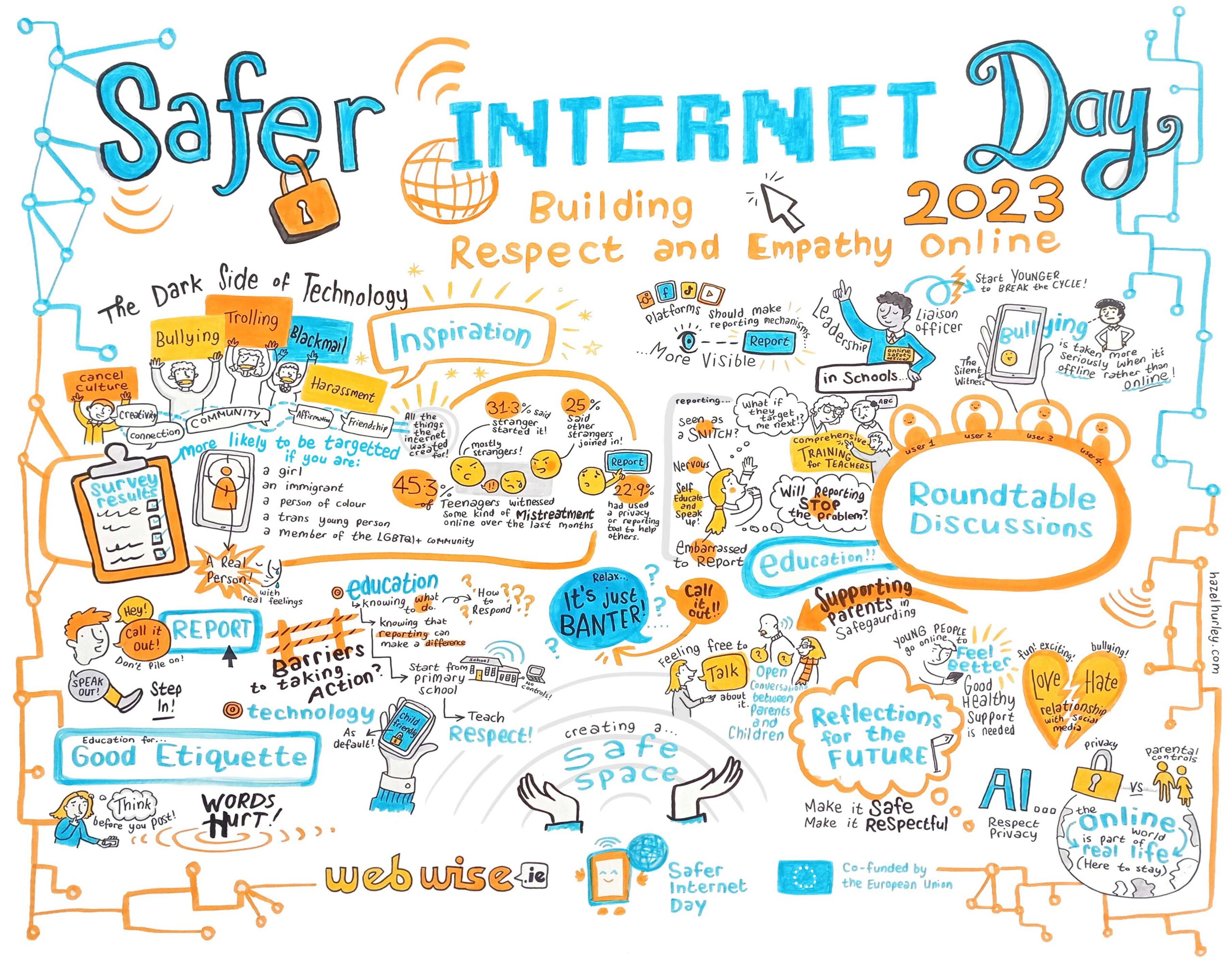By Jane McGarrigle, Webwise
Safer Internet Day (SID) has become a global landmark event in the online safety calendar with 2023 being its 20th year. In Ireland for Safer Internet Day 2023, the Irish Safer Internet Centre promoted the theme of respect and empathy online. Almost 200,000 young people and children took part in initiatives around the country to mark Safer Internet Day 2023.
One challenge in particular the Irish Safer Internet Centre reflected on is online bullying – it is the most common negative experience children encounter online in Ireland. On Safer Internet Day 2023 the Silent Witness national awareness campaign addressing online bullying was launched at a youth-led event in Dublin to discuss and reflect on building respect and empathy online. A report on the event, discussions and SID 2023 Activity is now available: https://www.webwise.ie/trending/safer-internet-day-2023-report/.
Bystander Behaviour Online Among Young People in Ireland
The SID 2023 Report also contains new findings from a joint research study of Bystander Behaviour Online Among Young People in Ireland commissioned by Webwise and conducted by DCU Anti-Bullying Centre.
Key Findings
- There is a high online connectivity among young people in Ireland. Most students in the sample had a mobile phone with access to the Internet (98.1%), and their mean age for getting the first smartphone was 11.72 years old.
- Cyberbullying is frequently witnessed online, with 45.3% of students surveyed report witnessing some kind of mistreatment online over the last months, being therefore cyberbullying bystanders.
- Various forms of direct verbal abuse are the most common online. From those who witnessed cyberbullying, 64.6% reported name calling, and mockery or insults were also witnessed by 63.5% of the bystanders.
- The space where cyberbullying most often takes place is social media. Of the bystanders, 60.4% reported having witnessed cyberbullying on a social network.
- Among those who reported witnessing cyberbullying, 31.3% said a stranger started it and 25% said other strangers joined in.
- Participants are in general aware of protective mechanisms provided by social networks, and report using those mechanisms to protect themselves, but not so much to help others. The most common mechanism for helping other people is the report button used by 14.2% of the sample.
- The preferred persons to to talk about witnessing cyberbullying were parents/guardians and friends. Of the bystanders, 30.2% told their parents about the cyberbullying witnessed and 29.2% told their friends.
- Bystanders are heavier internet and digital device users that their non-bystander peers. The rate of bystanders interacting with content from other people in social media daily is 48.4%, while for non-bystanders is 24.3%.
- Participants’ comments tend to diminish the impact of cyberbullying compared to offline victimisation, but only a few recommend ignoring it. The main advice participants would give to people who are bullied online is to report in the platform and tell a trusted adult or a friend.
The full report is available to download here.
